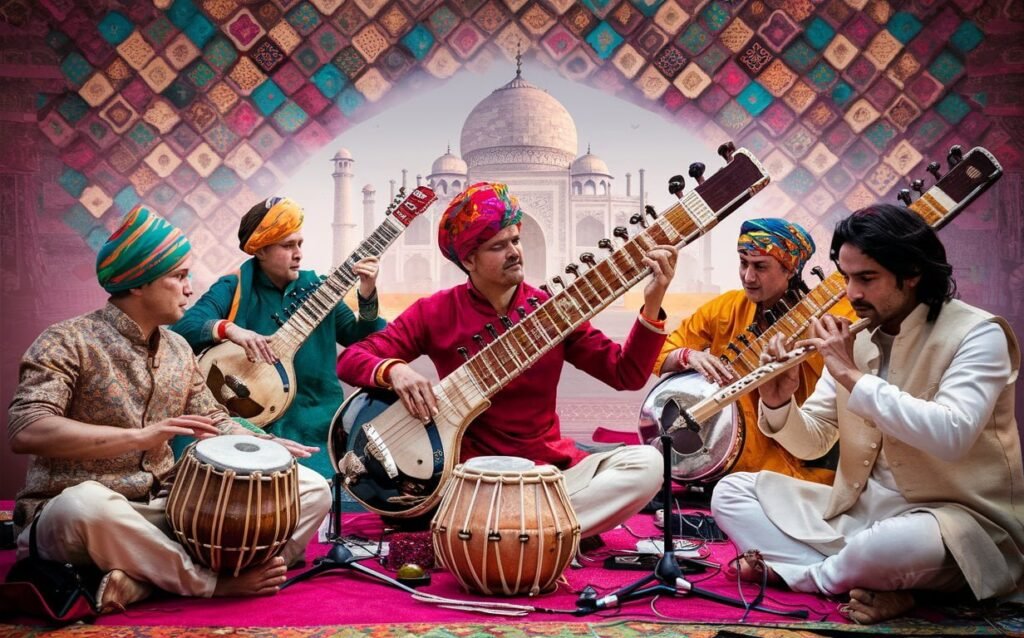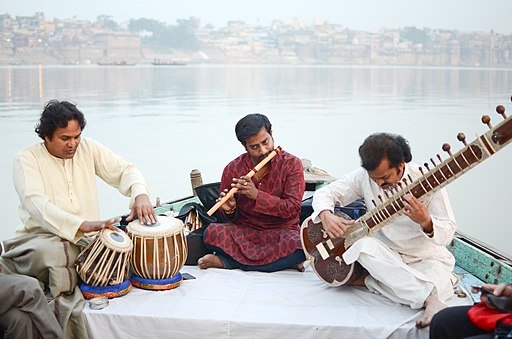Indian classical music, one of the oldest musical traditions in the world, is a profound expression of cultural heritage and spiritual depth. It encompasses a diverse range of styles and forms, each with its unique characteristics and historical significance. This article delves into the rich tradition of Indian classical music, exploring its history, key forms, influential musicians, and its impact on contemporary music.
Historical Background
Origins and Development
Indian classical music traces its origins to the Vedic period, with references found in ancient texts such as the Vedas and the Natya Shastra. Its development over the centuries reflects a rich tapestry of cultural and spiritual influences.
Key Historical Phases:
- Vedic Period: Early musical traditions are described in the Vedas, focusing on chants and hymns.
- Medieval Period: The emergence of distinct musical forms and systems, including the development of ragas and talas.
- Mughal Influence: The integration of Persian musical elements during the Mughal era enriched Indian classical music.
Key Texts and Theories
Natya Shastra: An ancient treatise on performing arts, attributed to Bharata Muni, which outlines the principles of music, dance, and drama. It serves as a foundational text for Indian classical music theory.
Sangeet Ratnakara: Written by Sarangadeva in the 13th century, this treatise is an important source of knowledge on the theory and practice of Indian music.
Major Forms of Indian Classical Music
Indian classical music is primarily divided into two major traditions: Hindustani and Carnatic. Each tradition has its unique characteristics, techniques, and repertoire.
Hindustani Classical Music
Overview
Hindustani classical music, originating from North India, is characterized by its emphasis on improvisation and expressive melodies. It has a rich tradition of vocal and instrumental performances.

Key Elements:
- Raga: A melodic framework that provides the structure for improvisation and composition. Each raga is associated with specific emotions and times of day.
- Tala: The rhythmic cycle that organizes the beats in a musical composition. It provides the rhythmic structure for performances.
Notable Artists
- Ravi Shankar: A renowned sitar virtuoso known for his contributions to Indian classical music and his collaborations with Western musicians.
- Zakir Hussain: A celebrated tabla player, acclaimed for his skill and innovation in rhythmic patterns.
Carnatic Classical Music
Overview
Carnatic classical music, originating from South India, is known for its complex compositions and emphasis on lyrical content. It has a distinct system of ragas and talas and features a wide range of vocal and instrumental styles.
Key Elements:
- Kriti: A type of composition that forms the core of Carnatic music. It is characterized by its structured format and lyrical content.
- Raga and Tala: Similar to Hindustani music, but with a distinct set of ragas and talas unique to the Carnatic tradition.
Notable Artists
- M.S. Subbulakshmi: A legendary vocalist known for her profound interpretations of Carnatic music.
- Lalgudi Jayaraman: A renowned violinist who made significant contributions to the Carnatic music tradition.
Influence on Contemporary Music
Fusion and Collaboration
Indian classical music has significantly influenced contemporary music genres, leading to the emergence of fusion styles and collaborative projects. Musicians often blend classical elements with jazz, rock, and electronic music to create innovative and diverse sounds.
Examples:
- Ravi Shankar and George Harrison: The collaboration between the sitar maestro and the Beatles’ guitarist brought Indian classical music to a global audience.
- A.R. Rahman: A composer who incorporates classical elements into his film scores, creating a unique blend of traditional and contemporary sounds.
Global Impact
Indian classical music’s rich tradition has garnered international recognition, leading to its inclusion in global music festivals, educational institutions, and media platforms. Its influence extends beyond traditional performances to various aspects of popular culture.
Global Contributions:
- Music Festivals: Indian classical music is featured in prestigious festivals worldwide, such as the WOMAD (World of Music, Arts and Dance) festival.
- Educational Institutions: Indian classical music is taught in universities and conservatories around the world, contributing to its global appreciation and practice.
Preserving and Promoting Tradition
Educational Initiatives
Efforts to preserve and promote Indian classical music include educational programs, workshops, and festivals. These initiatives aim to ensure the continuity of this rich tradition and encourage new generations to engage with it.
Educational Programs:
- University Departments: Many universities offer specialized programs in Indian classical music, fostering academic research and practical training.
- Music Schools and Gurukuls: Traditional music schools and modern institutions provide training in various aspects of classical music.
Cultural Organizations
Various cultural organizations and institutions play a vital role in supporting and promoting Indian classical music. They organize concerts, festivals, and exhibitions that highlight the richness and diversity of this musical tradition.
Notable Organizations:
- Sangeet Natak Akademi: The National Academy of Music, Dance, and Drama, which promotes and preserves India’s performing arts heritage.
- Kalakshetra Foundation: An organization dedicated to the preservation and promotion of classical arts, including music and dance.
Conclusion
The rich tradition of Indian classical music reflects a deep cultural and spiritual heritage that has evolved over centuries. From its ancient roots to its contemporary expressions, Indian classical music continues to captivate and inspire audiences both in India and around the world. As this tradition evolves, it remains a testament to the enduring power of music to connect, express, and enrich the human experience.

